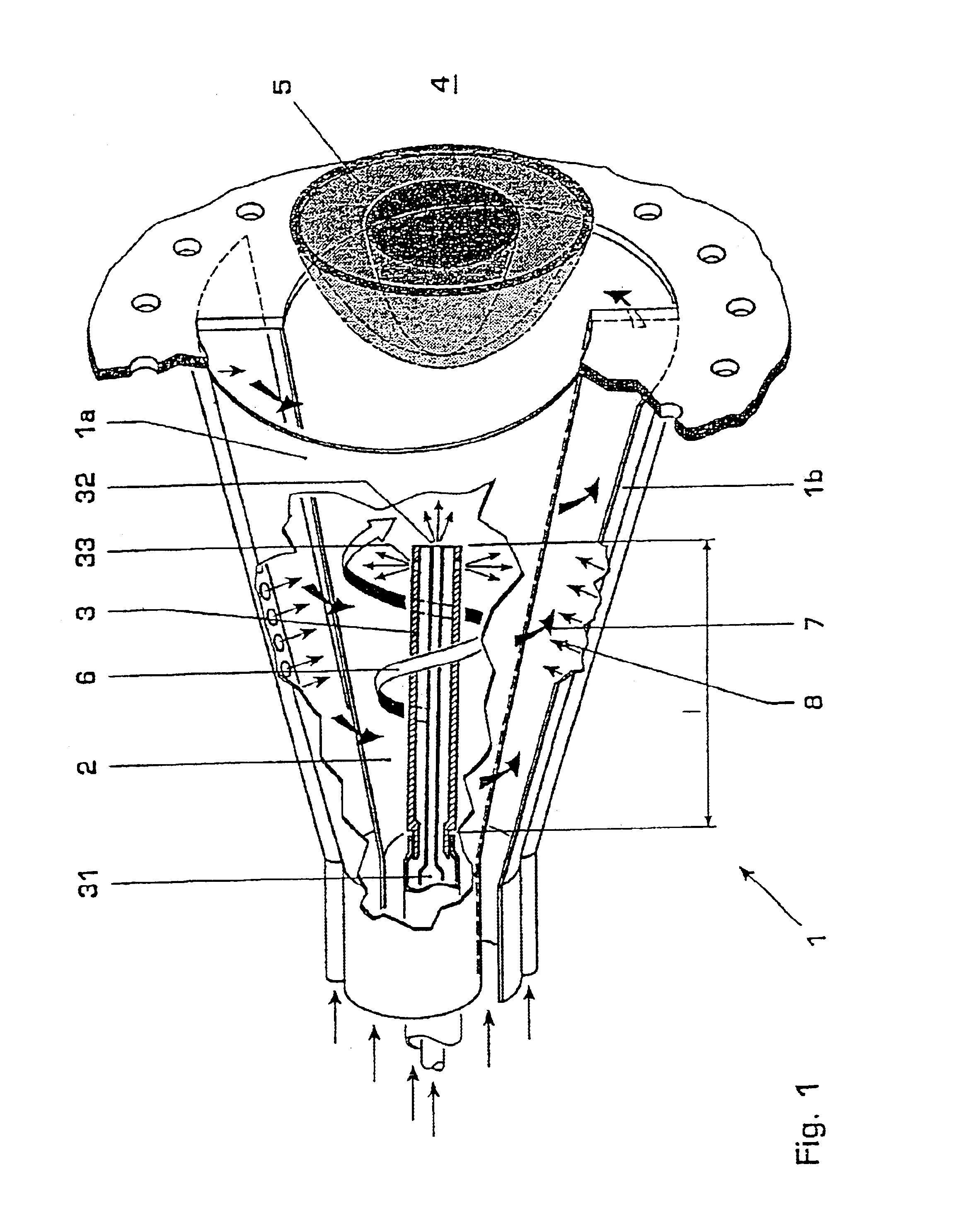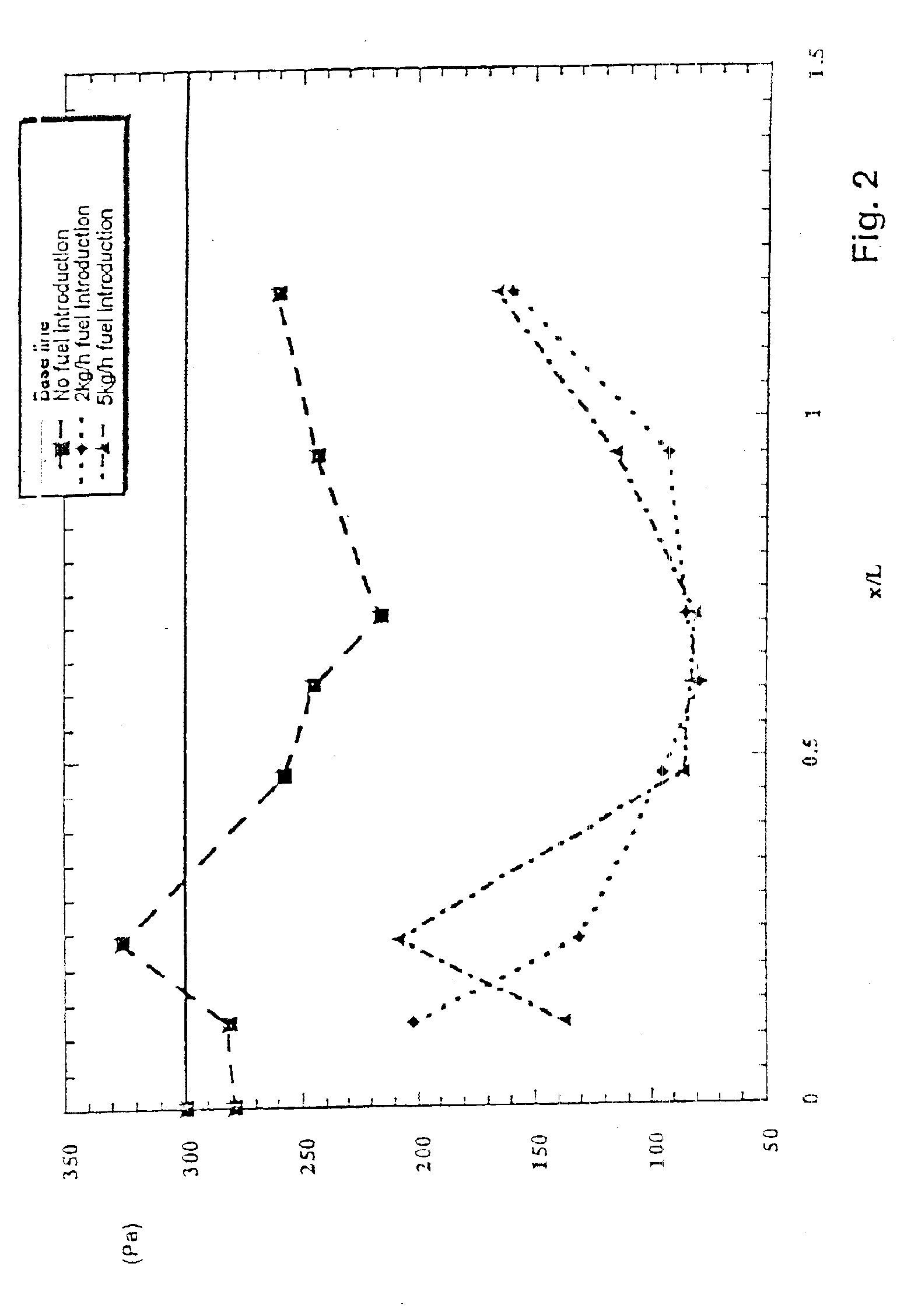Method for the reduction of combustion-driven oscillations in combustion systems and premixing burner for carrying out the method
a technology of combustion system and combustion system, which is applied in the ignition of turbine/propulsion engine, combustion type, lighting and heating apparatus, etc., can solve the problems of unsatisfactory periodic heat release within the combustion chamber, fuel at the head stage is accompanied by an increase in the emission of no/sub>x/sub>, and thermoacoustic oscillations present problems
- Summary
- Abstract
- Description
- Claims
- Application Information
AI Technical Summary
Benefits of technology
Problems solved by technology
Method used
Image
Examples
Embodiment Construction
[0024]FIG. 1 illustrates in longitudinal section a premixing burner 1, such as may be gathered in terms of its basic construction, for example, from EP 0 321 809. The premixing burner 1 consists of two semimonocoque conically widening part bodies 1a and 1b which are arranged axially parallel, and offset to one another, in such a way that they form tangential gaps in two overlap regions located mirror-symmetrically opposite one another. The gaps resulting from the offset of the longitudinal axes of the part bodies 1a and 1b serve as inlet ducts, through which the combustion air 7 flows tangentially into the burner interior 2 when the burner is in operation. Located along these inlet ducts are injection orifices, through which a preferably gaseous fuel 8 is injected into the combustion air 7 flowing past. In addition to this fuel injection 8 at the burner casing, this above-mentioned generic type of burner possesses, centrally arranged in the initial region of the burner interior 2, a...
PUM
 Login to View More
Login to View More Abstract
Description
Claims
Application Information
 Login to View More
Login to View More - R&D
- Intellectual Property
- Life Sciences
- Materials
- Tech Scout
- Unparalleled Data Quality
- Higher Quality Content
- 60% Fewer Hallucinations
Browse by: Latest US Patents, China's latest patents, Technical Efficacy Thesaurus, Application Domain, Technology Topic, Popular Technical Reports.
© 2025 PatSnap. All rights reserved.Legal|Privacy policy|Modern Slavery Act Transparency Statement|Sitemap|About US| Contact US: help@patsnap.com



